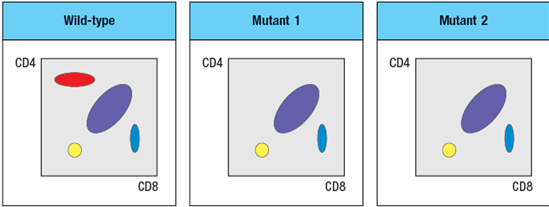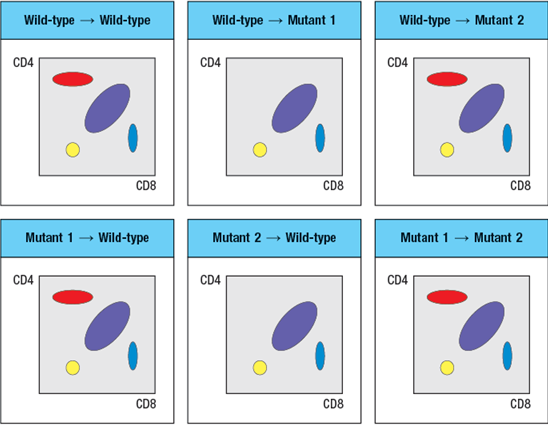Two mutant lines of mice have been identified, each of which has a defect in T cell development. The subsets of thymocytes found in each mutant mouse line are shown in Figure 
To narrow down the possible defects in each mutant line, a series of bone marrow chimeras are made in which bone marrow from one strain of mice (the ‘donor’ strain) is used to reconstitute a second strain (the ‘recipient’ strain) , immediately following the irradiation of the recipient strain to eliminate its own hematopoietic cells. In this procedure, the resulting chimeras have hematopoietic cells that are 100% derived from the donor strain, and all other cells and tissues are derived from the recipient strain. The thymocyte profiles of the series of bone marrow chimeras is shown in Figure in each case the label at the top of each FACS plot refers to ‘donor bone marrow recipient’:
-A potential candidate molecule for the gene that is defective in Mutant-1 is:
Definitions:
Renewable Resources
Natural resources that can be replenished at a rate comparable to their consumption, such as solar energy, wind energy, and bioenergy.
Shelf Life
The length of time a product remains usable, saleable, or consumable before it is considered unsuitable for sale or use.
Spoilage Index
A measure used to evaluate the extent to which perishable goods may deteriorate or lose quality over a period.
Product Life Cycle
The progression of a product through four stages: introduction, growth, maturity, and decline.
Q2: T cells expressing the co-receptor CD8 are
Q4: Which of the following is a correct
Q4: CD8-binding site<br>
Q7: If one swapped the regulatory elements
Q9: West Nile virus (WNV) is
Q16: Binds to interleukin-8<br>A)CXCL8 (IL-8)<br>B)CXCL10 (IP-10)<br>C)CCL19 (ELC)<br>D)CCL11 (Eotaxin)<br>E)CCR5<br>F)CXCR1<br>G)CXCL13
Q24: The immune response to helminthic worm infections
Q34: Alefacept is a fusion protein that contains
Q40: Data for selected vegetables purchased at wholesale
Q47: A payoff table is needed to:<br>A) control